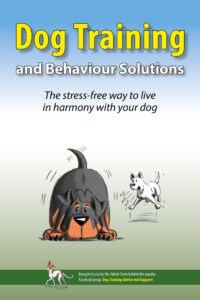Pets and Their People Blog
Help Prevent Separation Anxiety Related Problems with The Flitting Game
There’s a two-part game that I call The Flitting Game. This game, and The ‘Where’s Your Dinner?’ Game, are the preparatory stages for building your dog’s confidence and sense of security. Together with careful management and avoiding leaving your dog alone before they can cope, these are the foundations for preventing separation anxiety related problems.
STEP ONE
To play, start off by choosing two adjacent rooms, ideally the kitchen and living room.
Set the timer on your phone (silently) for five minutes, then make multiple trips from one room to the next; fiddle with something in one room, and then move on. As you do this, ignore your dog. As in, don’t talk to him or touch him but keep an eye on him. When he begins to settle, flit again.
Over the course of a few sessions, you should find your dog becomes slower to get up, slower to settle, lurks in the hallway or in doorways, and starts to look annoyed at you because this is now tedious. Ugh! And unrewarding.
It’s important to remember that this is not some strict military regime. If you want your dog to come with you, to talk to him, to fuss him, fine. You can invite him along outside of these sessions. The point is, when you do not invite him, it might not be worth his effort to follow you. Once he has realized that, you can occasionally add in a good reason to choose not to follow you.
STEP TWO
So, step two is to add that reason – a big juicy bone, a big, filled Kong, something that’s highly rewarding and a pain in the backside to lift and carry around. Now repeat the flitting. If he chooses not to follow you, try to spend a little less time in the ‘away’ room, a little more in the ‘home’ room, and build up gradually, second by second.
Don’t always give the Kong or bone, continue doing sessions without; very gradually build up to other rooms and longer durations away. At any point, your dog is free to come and check that you’re still there. If he does, that’s fine. Don’t say hi or anything, but make a mental note that perhaps this was a step too far and so scale back.
The idea is that your dog learns that it’s his choice not to follow and that sometimes, that choice is highly reinforcing. At other times, it’s just saving him some tedium and effort. He is free to check up if he’s worried. There’s no force or pressure at all.
About the Author

This article is taken from the book “Dog Training and Behaviour Solutions” brought to you by the professional team behind the Facebook group Dog Training Advice and Support (DTAS).
Find the book on Amazon UK
Find the book on Amazon in the US
Emma Judson has been a dog training and behavior consultant for over 20 years, and is an ABTC registered practitioner, a qualified ATI with the Professional Association of Canine Trainers and a full member of the Pet Professional Guild.
